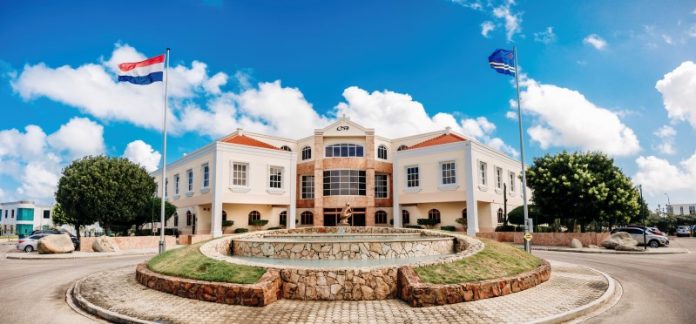Today, the Centrale Bank van Aruba (CBA) published the revised Economic Outlook for 2020.
Based on available data and considering the significant level of uncertainty regarding the COVID-19 pandemic and the economic recovery, the CBA estimated the economic output based on different scenarios for the year 2020. As a result of the necessary extra ordinary measures to protect human lives from the COVID-19 pandemic, the Aruban economy, like the global economy, is severely affected. The depth of the economic crisis will depend upon the duration of the COVID-19 pandemic and the subsequent recovery trajectory. Consequently, real Gross Domestic Product (GDP) in Aruba is projected to contract between 16.4 percent (Scenario A: no significant tourism activity for 3 months) and 31.3 percent (Scenario C: no significant tourism activity 9 months), compared to an estimated growth of 2.8 percent in a scenario where, among other things, the pandemic would not have occurred. The forecasted economic contraction is the result of a strong drop in tourist arrivals, private consumption (and related imports), and, in scenarios B and C, investment.
The anticipated 12-month average inflation rate for 2020 in the various scenarios is 1.4 percent. This is lower than the 4.3 percent recorded in 2019. The expected lower rate of inflation results from the decrease in electricity tariffs as of January 1, 2020, as well as the assumption of lower stable oil prices, and no tax increases. Potential price effects from a decrease in demand due to the pandemic were not taken into account.
The significant drop in tourism activity causes a large current account deficit in 2020 in all scenarios. The deficit is partially offset by a drop in imports resulting from a decline in both domestic and tourism demand. The loss in tourism credits is further compensated by reduced services payments, and lower income and current transfer outflows.
The capital and financial account is expected to record a significant surplus in all scenarios in 2020. This is due to the surge in the fiscal deficit, which is expected to cause substantial foreign government borrowing. The latter would compensate for a slowdown in incoming investment flows as several investment projects would undergo delays.
The level of net foreign assets (excluding revaluation differences) is projected to reach a level between Afl. 2,214.0 million and Afl. 2,472.1 million in 2020. The forecasted increase in 2020 is due mainly to an expected increase in government foreign borrowing, as well as a drop in imports, which compensates for the deterioration in the current account due to the decline in tourism demand. NFA are estimated in all scenarios to remain above the minimum required current account coverage ratio of three months in 2020.
| Table 1: Growth of real GDP and its components 2019-2020 (in percent) | |||||
| Indicator | 2019 e | 2020 f | 2020 Scenario A f | 2020 Scenario B f | 2020 Scenario C f |
| Current Outlook (June 2020) | |||||
| GDP | -0.7 | 2.8 | -16.4 | -27.0 | -31.3 |
| Consumption | -0.3 | -0.2 | -4.4 | -5.6 | -5.0 |
| Private consumption | -0.1 | 3.0 | -11.3 | -20.4 | -21.7 |
| Public consumption | -0.9 | -10.6 | 17.7 | 41.5 | 48.3 |
| Investment | -0.9 | 17.8 | 11.4 | -1.9 | -5.3 |
| Private investment | 1.7 | 19.4 | 11.1 | -2.6 | -6.2 |
| Public investment | -46.9 | -34.4 | 21.9 | 21.9 | 21.9 |
| Exports | 1.7 | -0.9 | -47.6 | -70.4 | -79.1 |
| Tourism exports | 2.7 | -1.4 | -46.0 | -69.0 | -78.6 |
| Imports | 2.0 | 0.7 | -26.0 | -39.6 | -42.8 |
| Sources: CBA. | e = estimate; f = forecast. |
The complete publication is available on the CBA’s website (www.cbaruba.org).




















